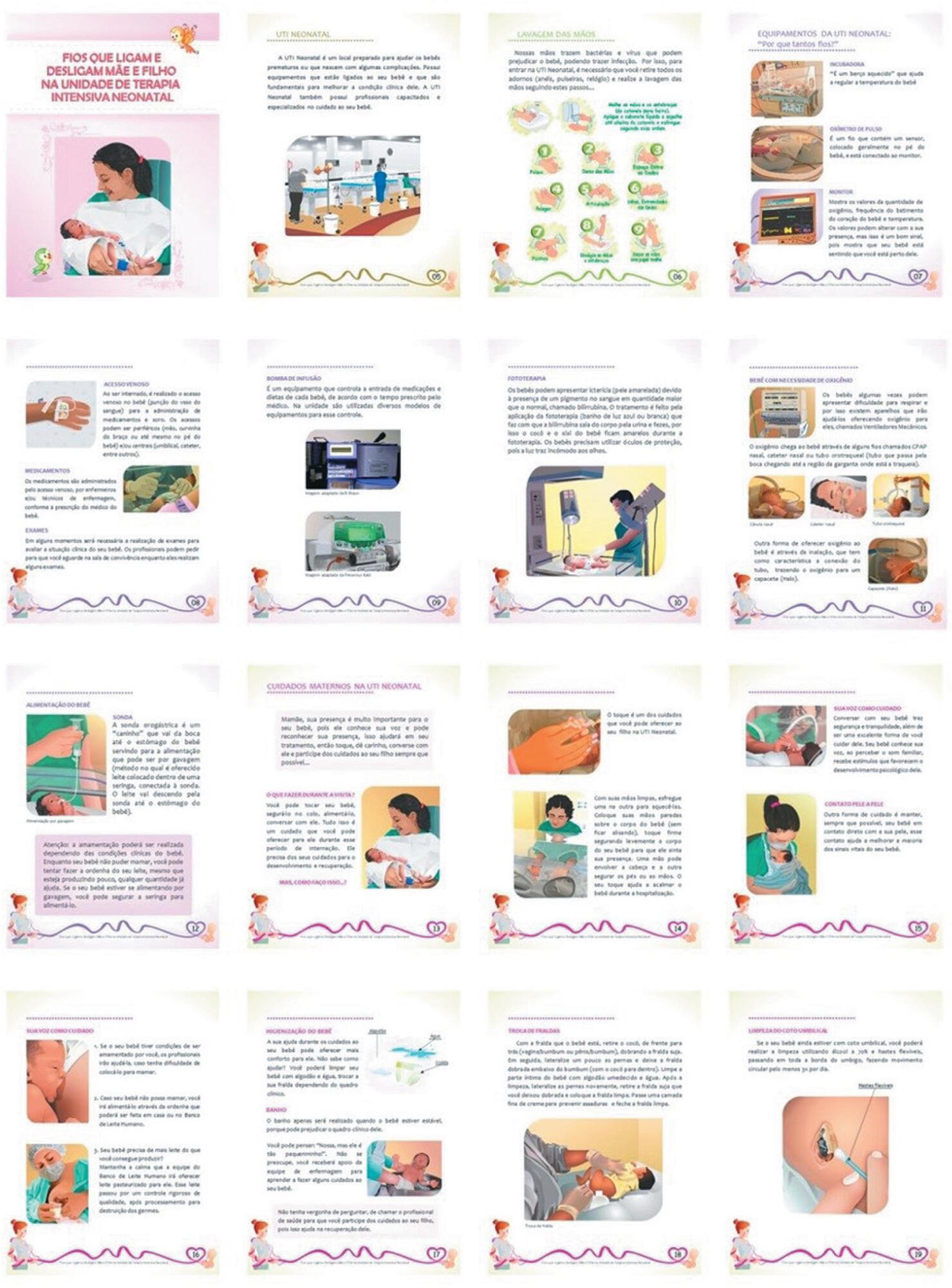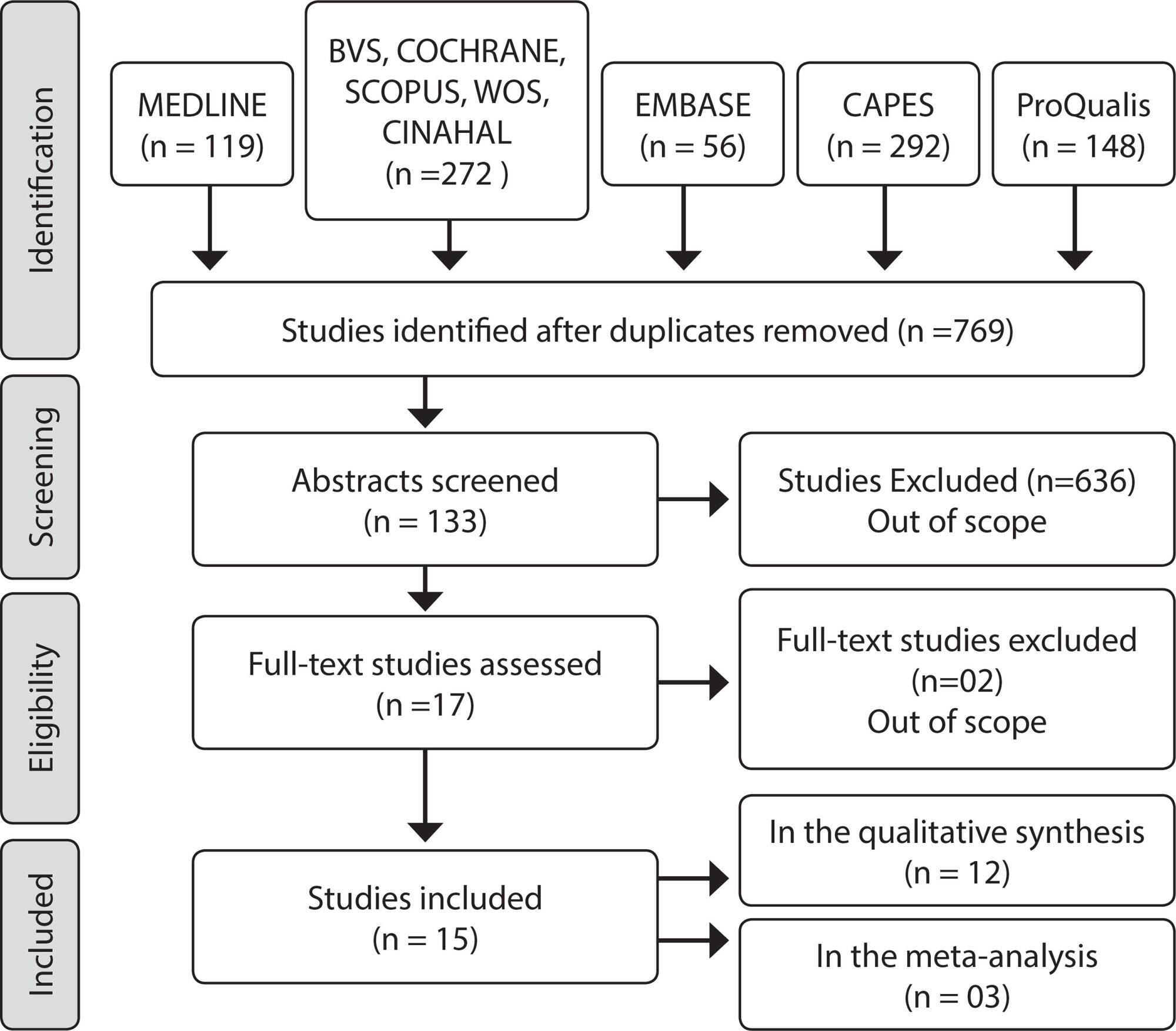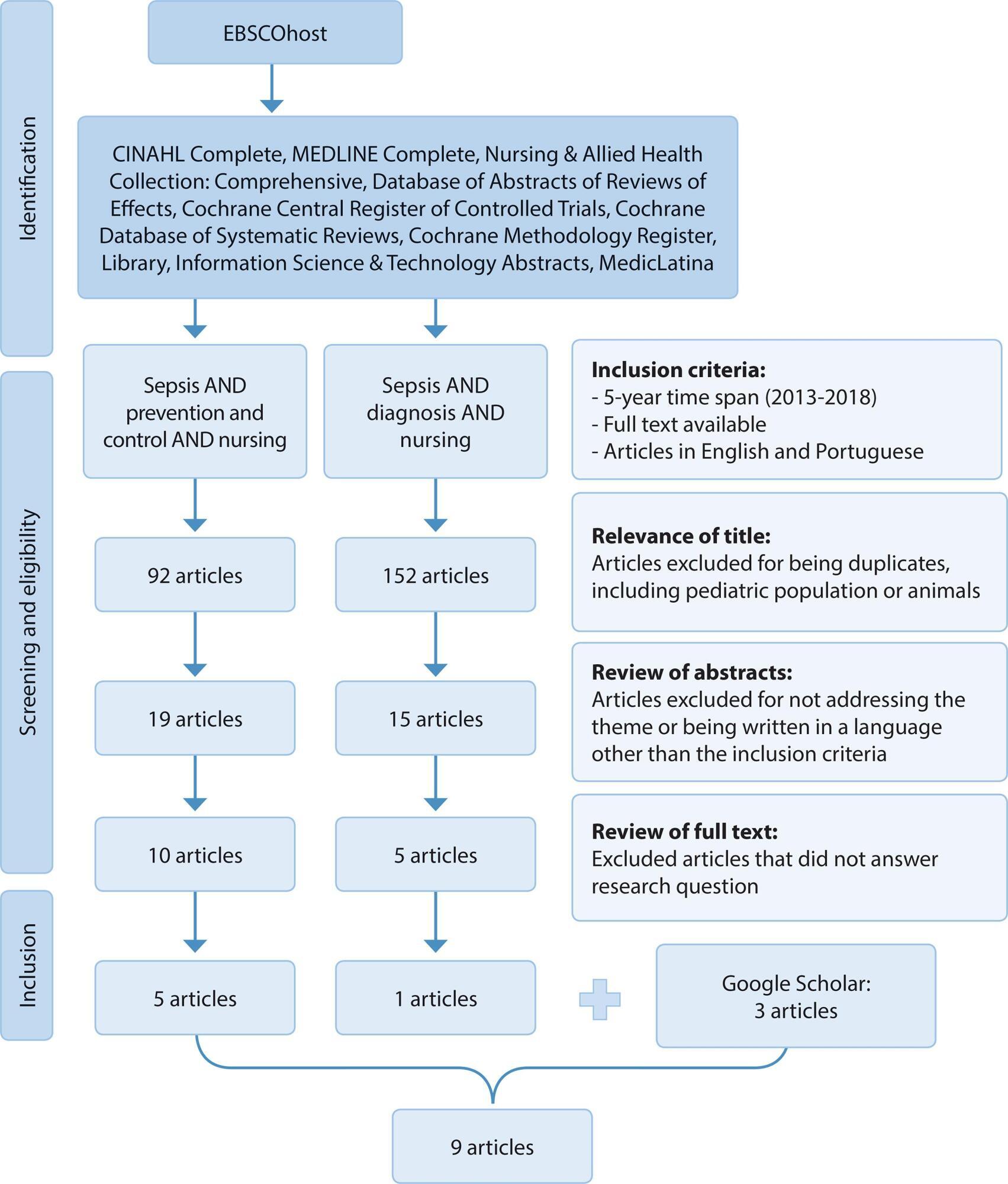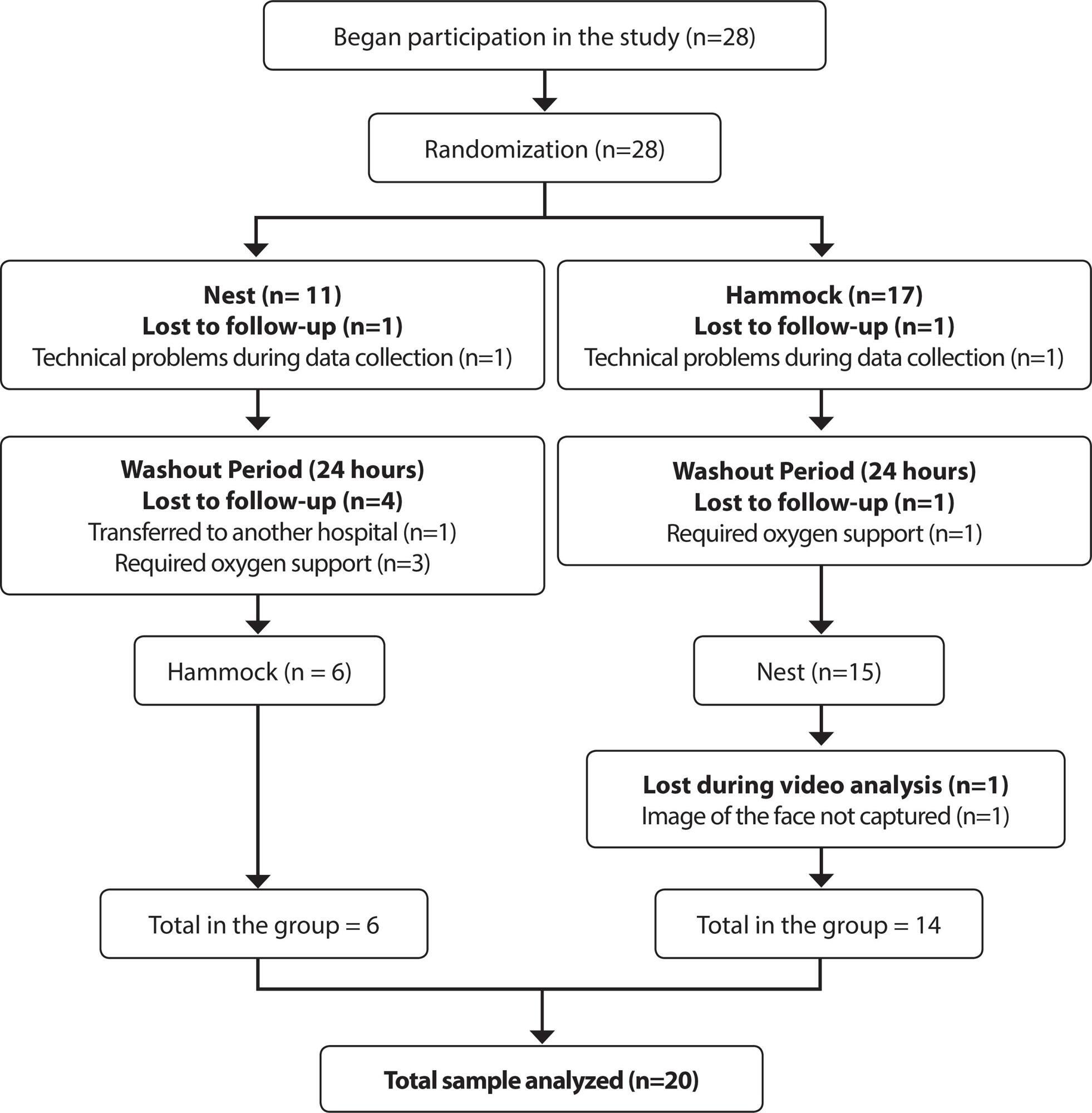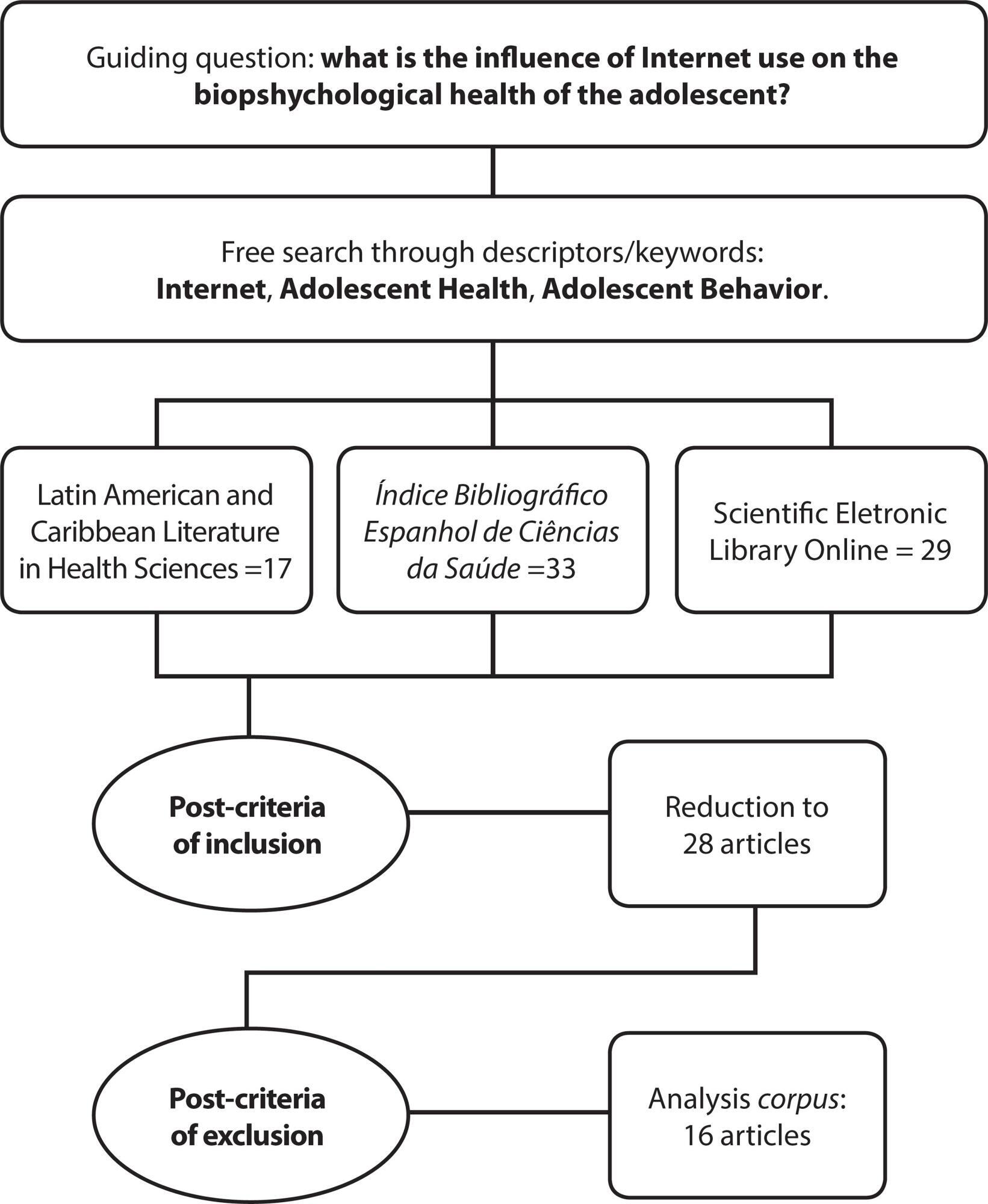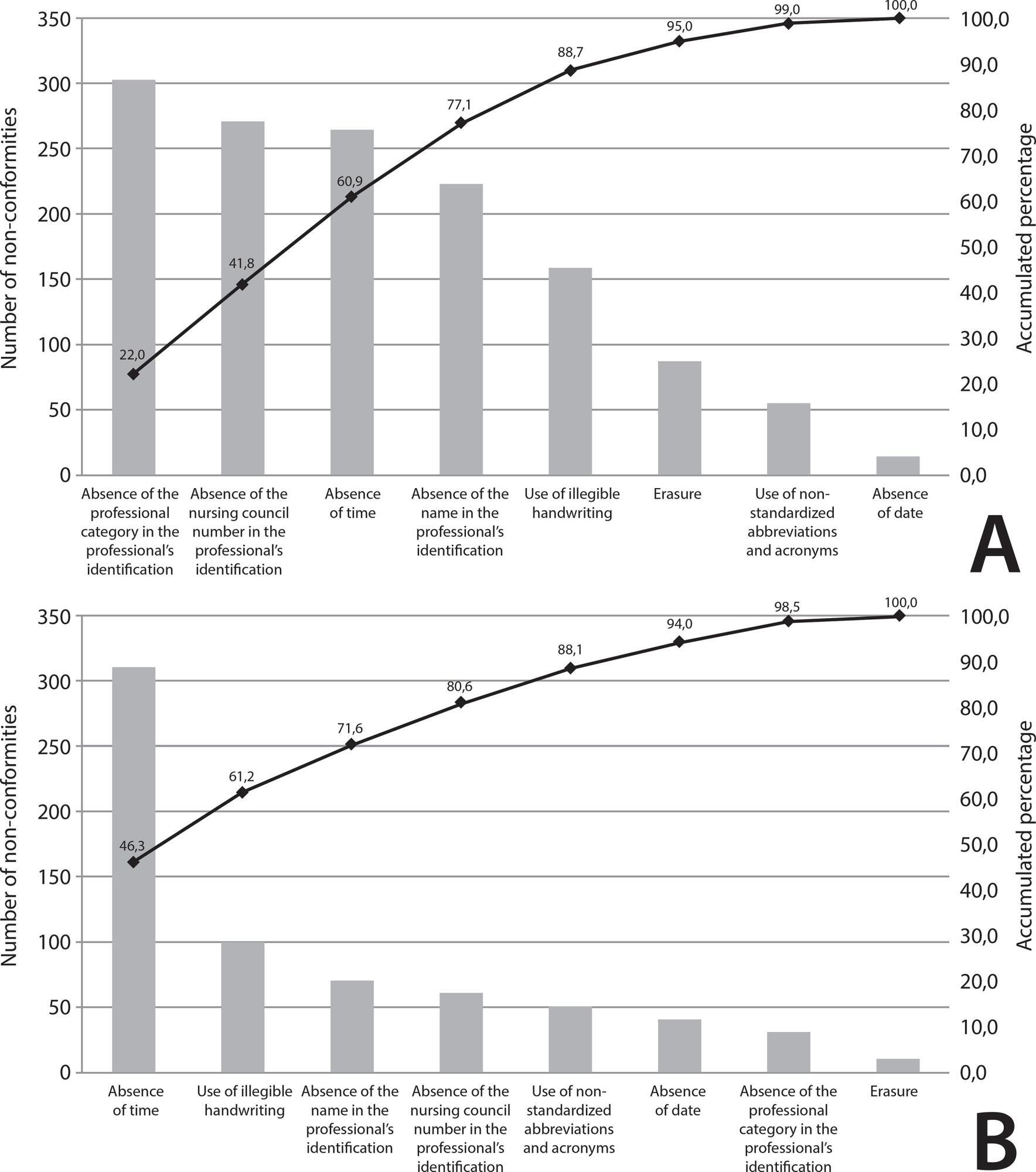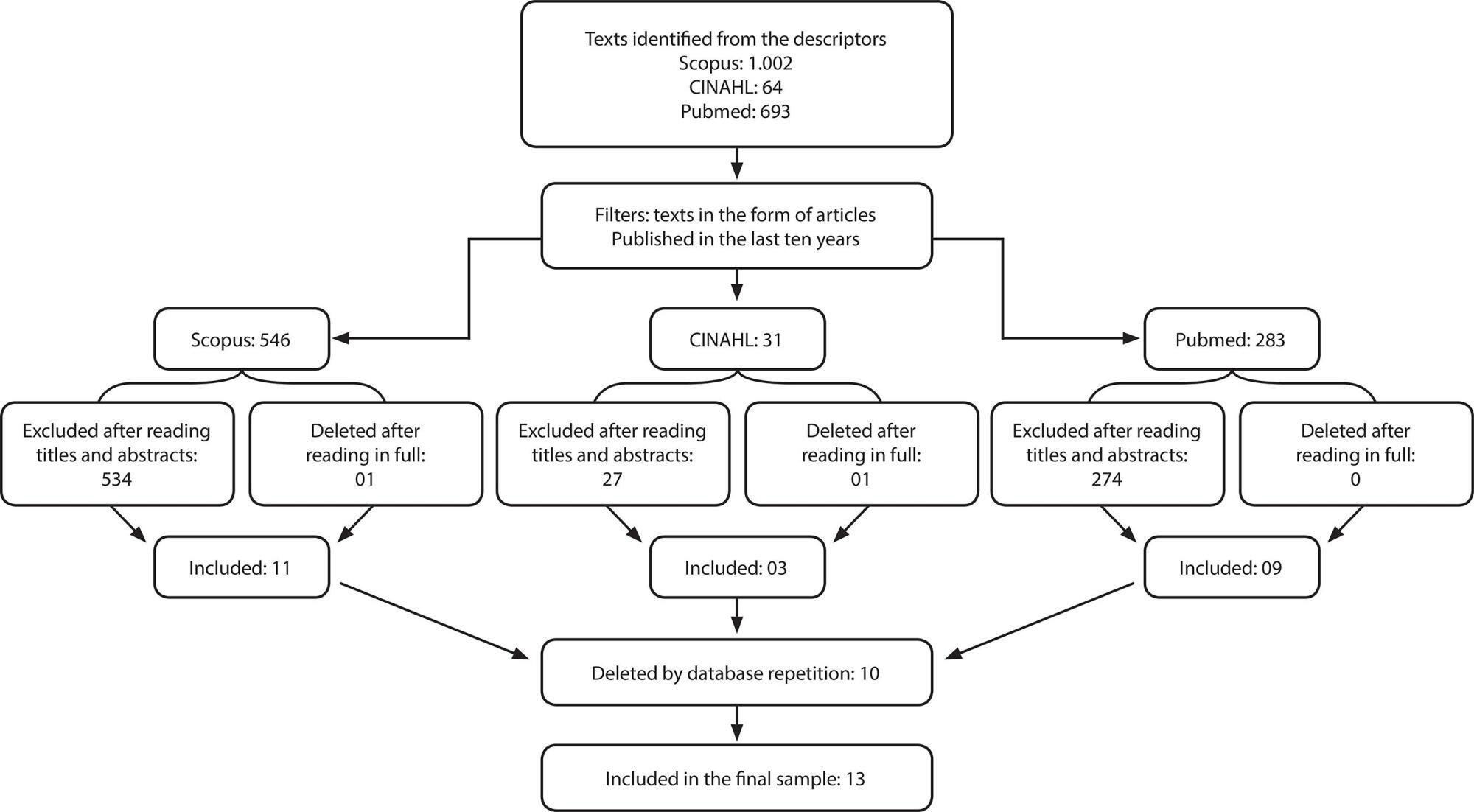-
01-01-2016
Leads for potentializing groups in Primary Health Care
Revista Brasileira de Enfermagem. 2016;69(5):964-971
Abstract
Leads for potentializing groups in Primary Health Care
Revista Brasileira de Enfermagem. 2016;69(5):964-971
DOI 10.1590/0034-7167-2015-0102
Views0See moreABSTRACT
Objective:
to analyze the aspects that potentialize groups in Primary Health Care according to their coordinators and participants.
Method:
This is a descriptive study with a qualitative approach, conducted with a health promotion group affiliated with a Family Health Unit. The data were collected by means of focus groups with participants and community workers who were submitted to thematic content analysis.
Results:
the analysis gave rise to three thematic categories: The group is our medicine; Healthy living and learning; and Priceless leadership.
Conclusion:
the leads identified during the study were as follows: group organization involves investment in motivation and leadership by the coordinators; production of grouping and cohesion is a result of participants and coordinators meeting together, interspersed with dialog, things said and left unsaid that the subjects expressed in the group dynamic; the sense of belonging guarantees their placement in the group based on the recognition of their knowledge and affective, social and health needs.
PlumX Metrics
- Citations
- Citation Indexes: 16
- Usage
- Full Text Views: 10022
- Abstract Views: 1629
- Captures
- Readers: 77
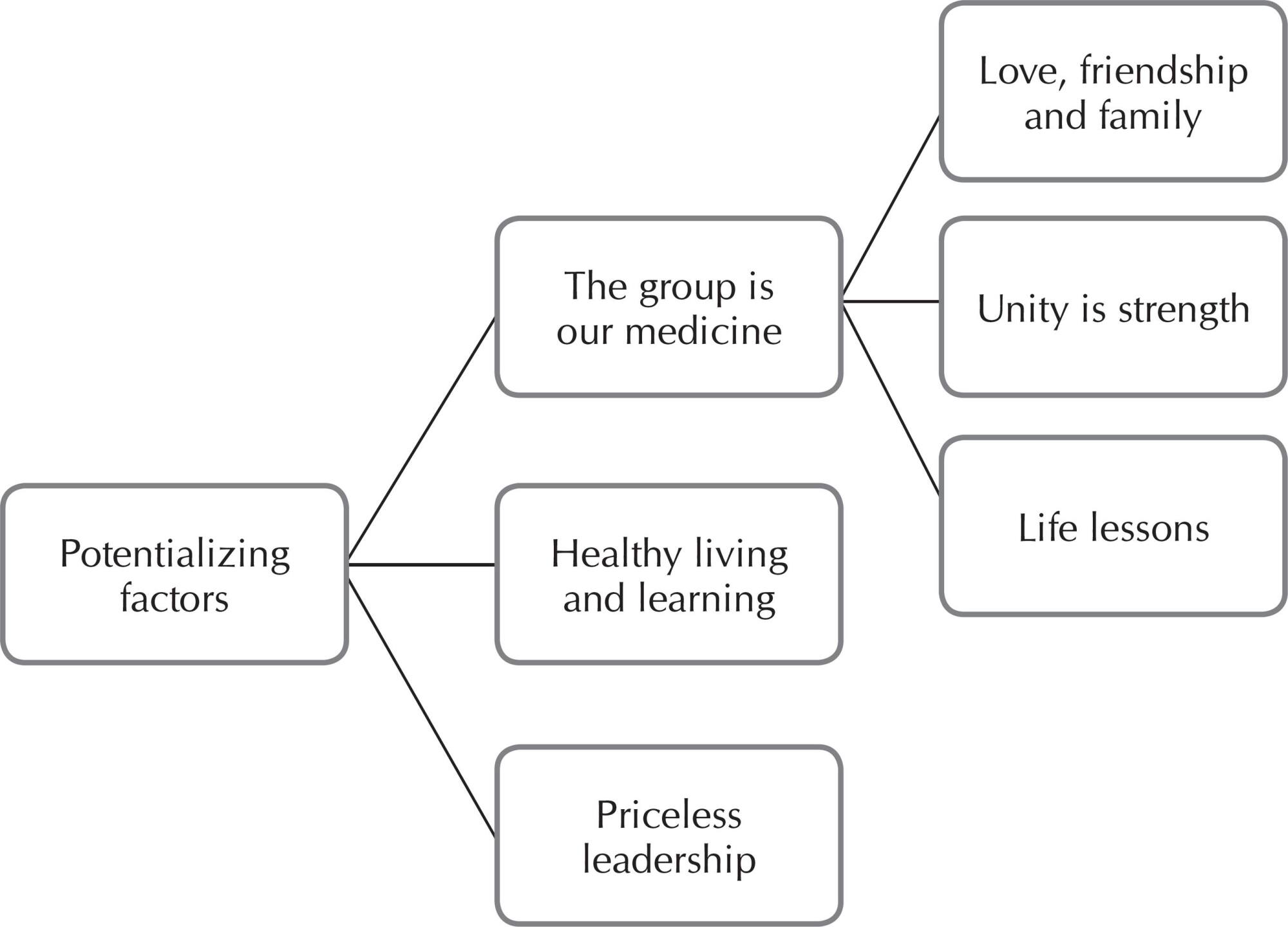
-
01-01-2016
The path to crack addiction: perceptions of people under treatment
Revista Brasileira de Enfermagem. 2016;69(5):956-963
Abstract
The path to crack addiction: perceptions of people under treatment
Revista Brasileira de Enfermagem. 2016;69(5):956-963
DOI 10.1590/0034-7167-2016-0045
Views0See moreABSTRACT
Objective:
the objective of this study was to understand the meaning of the harmful use of crack by people undergoing addiction treatment.
Method:
qualitative approach of social research on strategic modality was used. Field observation, preparation of field diary and focus groups, and data analysis through the method of interpreting meaning were carried out.
Results:
the results contributed to the construction of three thematic categories: “The discovery of crack and other drugs” that describes the experimentation with crack and other drugs; “The pain of the pleasure”, key category that describes the moments after crack experimentation and that, many times, turns into addiction, which leads the person into a cycle of short periods of attempts at abstinence, relapse, and relentless consumption; and “Return to normal life”.
Conclusion:
treating people with crack addiction must be carried out in ways that narrow the distance between these people and their families, society and health care.
PlumX Metrics
- Citations
- Citation Indexes: 2
- Usage
- Full Text Views: 12445
- Abstract Views: 551
- Captures
- Readers: 66
-
01-01-2016
Intimate partner violence in adolescence: an analysis of gender and generation
Revista Brasileira de Enfermagem. 2016;69(5):946-955
Abstract
Intimate partner violence in adolescence: an analysis of gender and generation
Revista Brasileira de Enfermagem. 2016;69(5):946-955
DOI 10.1590/0034-7167-2016-0408
Views0See moreABSTRACT
Objective:
to analyze the intimate partner violence in adolescence from the perspective of gender and generation.
Method:
Quantitative, descriptive, and exploratory research. 111 adolescents participated in this study, with ages from 15 to 19 years old.
Results:
We found that 91% of participants have perpetrated and 90.1% have undergone at least one of the natures of violence. The intimate partner violence in adolescence constitutes a form of gender violence, and gender constructions have determined the suffered and perpetrated aggressions, possibly also determining the naturalization and legitimization of such aggressions. The inequality of power between generations may determine greater vulnerability of youngsters to the phenomenon.
Conclusion:
The historical and social construction of masculinity and femininity and the power inequalities set by these constructions converge with the power inequality between generations. Thus, gender and generation are determinants of intimate partner violence in adolescence, as well as of the vulnerability of adolescents to this phenomenon.
PlumX Metrics
- Citations
- Citation Indexes: 14
- Usage
- Full Text Views: 12564
- Abstract Views: 1337
- Captures
- Readers: 122
-
01-01-2016
Hospitalization anxiety in children: conceptual analysis
Revista Brasileira de Enfermagem. 2016;69(5):940-945
Abstract
Hospitalization anxiety in children: conceptual analysis
Revista Brasileira de Enfermagem. 2016;69(5):940-945
DOI 10.1590/0034-7167-2015-0116
Views0See moreABSTRACT
Objective:
to analyze the concept “hospitalization anxiety in children”, identifying its antecedents, attributes, and consequences, with the objective of clarifying its meaning.
Method:
we used a conceptual analysis model, whose objective is to clarify the meaning of terms.
Results:
we identified the concept antecedents and its attributes, classified as biological and psychological needs, which are essential characteristics of “hospitalization anxiety in children”. This process consequences have also been identified. We proceeded to the analysis of the characteristics with emphasis on the impacts of the hospitalization process on the child and on the family.
Conclusion:
based on the conceptual analysis of the phenomenon, it was possible to identify the antecedents, attributes, and consequences of Hospitalization Anxiety in children. We recommend the continuation of the study validating the essential characteristics presently identified as a way to join knowledge gathered and professional practice.
PlumX Metrics
- Citations
- Citation Indexes: 22
- Usage
- Full Text Views: 15455
- Abstract Views: 635
- Captures
- Readers: 162
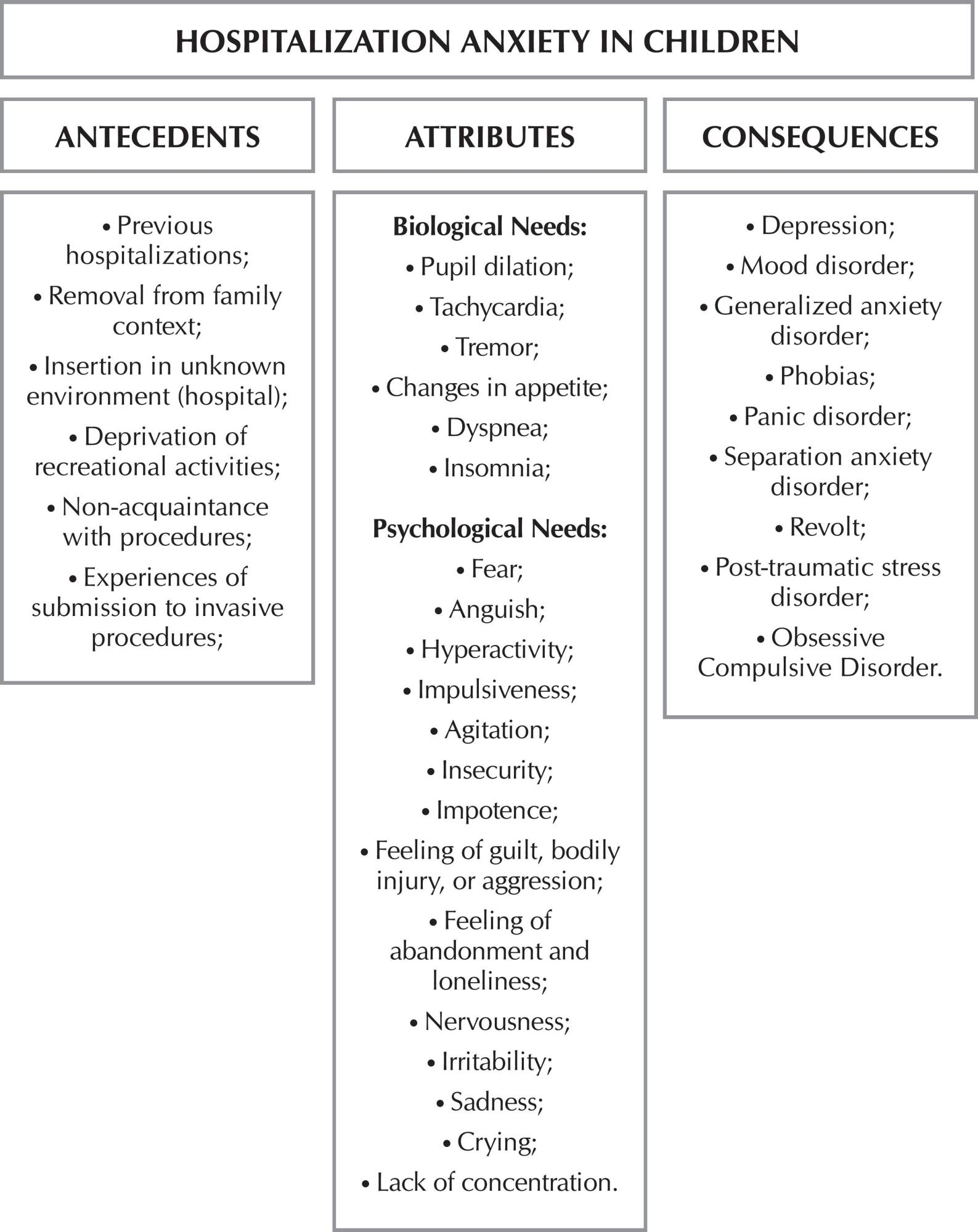
-
01-01-2016
Stroke: patient characteristics and quality of life of caregivers
Revista Brasileira de Enfermagem. 2016;69(5):933-939
Abstract
Stroke: patient characteristics and quality of life of caregivers
Revista Brasileira de Enfermagem. 2016;69(5):933-939
DOI 10.1590/0034-7167-2015-0064
Views0See moreABSTRACT
Objective:
to investigate the association between the domains of health-related quality of life of family caregivers and sociodemographic characteristics of individuals with stroke sequelae.
Method:
descriptive, cross-sectional, quantitative research, conducted with 136 family caregivers of individuals with stroke sequelae by means of home interviews from April to June 2013.
Results:
we found that caregivers of individuals aged under 65 years, married, with 10 to 12 years of formal education, presented higher scores, respectively, in the domains ‘Social aspects’, ‘Emotional aspects’, and ‘Mental health’. However, caregivers of patients with higher degree of disability obtained lower score in the ‘Mental Health’ domain.
Conclusion:
the results foster reflection on the need of including the family caregivers of individuals with stroke sequelae in the planning of care provided by health professionals.
PlumX Metrics
- Citations
- Citation Indexes: 23
- Usage
- Full Text Views: 20241
- Abstract Views: 4301
- Captures
- Readers: 186
-
01-01-2016
A quasi-experimental nursing study on pain in comatose patients
Revista Brasileira de Enfermagem. 2016;69(5):927-932
Abstract
A quasi-experimental nursing study on pain in comatose patients
Revista Brasileira de Enfermagem. 2016;69(5):927-932
DOI 10.1590/0034-7167-2015-0121
Views0See moreABSTRACT
Objective:
to verify whether comatose patients feel pain during the bed bath nursing procedure.
Method:
nineteen patients aged 61 ± 17.39 years participated in the study. A quantitative analysis was conducted on the P substance (PS) in the saliva collected before and during a bed bath, using the ELISA method. Program Graph Pad Prisma 6 was used to analyze the data. The verification of normality was made through the Shapiro Wilk test, which determined the choice for the Wilcoxon nonparametric test.
Results:
the study showed a statistically significant increase (∆= 5.62%, p<0.001) in the PS level of the patients studied during the nursing procedure.
Conclusion:
when caring for comatose patients during a bed bath, professionals cause or add painful stimuli; therefore, they feel pain.
PlumX Metrics
- Citations
- Citation Indexes: 2
- Usage
- Full Text Views: 16196
- Abstract Views: 1111
- Captures
- Readers: 49
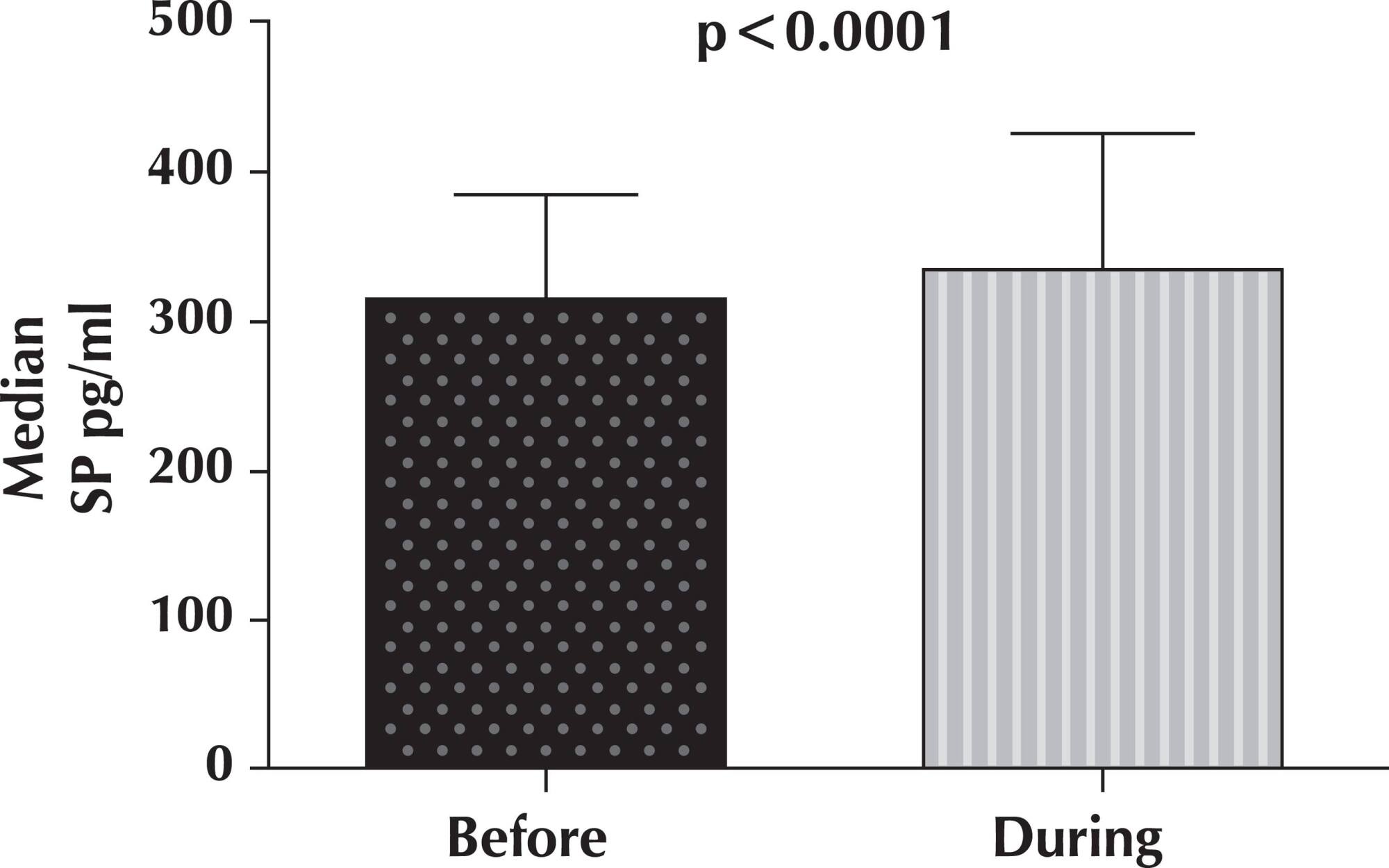
-
01-01-2016
Quality of nursing care: instrument development and validation
Revista Brasileira de Enfermagem. 2016;69(5):920-926
Abstract
Quality of nursing care: instrument development and validation
Revista Brasileira de Enfermagem. 2016;69(5):920-926
DOI 10.1590/0034-7167-2015-0151
Views0See moreABSTRACT
Objectives:
to describe the development and validation process of a scale to measure the nurses’ perception of the activities that contribute to nursing care quality.
Method:
methodological study based on a literature review, the opinion of experts and the experience of study investigators. An instrument was designed containing six dimensions and 25 items, applied as a questionnaire to 775 nurses from a hospital in northern Portugal, from May to July 2014. The instrument validation used an exploratory factor analysis and an internal consistency assessment of each factor/dimension.
Results:
the factor analysis indicated the need to adjust the original composition of the scale, which then received one more dimension, totaling seven dimensions and the same 25 items, and presented a high internal consistency (Cronbach’s alpha of 0.940).
Conclusion:
the final version of the scale presents adequate psychometric properties, with potential use in future studies.
PlumX Metrics
- Citations
- Citation Indexes: 23
- Usage
- Full Text Views: 15016
- Abstract Views: 977
- Captures
- Readers: 111
- Mentions
- News Mentions: 1
-
01-01-2016
Network and social support in family care of children with diabetes
Revista Brasileira de Enfermagem. 2016;69(5):912-919
Abstract
Network and social support in family care of children with diabetes
Revista Brasileira de Enfermagem. 2016;69(5):912-919
DOI 10.1590/0034-7167-2015-0085
Views0See moreABSTRACT
Objective:
to understand the influence of network and social support in the care of a child with type 1 diabetes.
Method:
qualitative study, with assumptions of ethnonursing, conducted in a reference service specialized in the treatment of diabetes, in 2014, in the city of Fortaleza, state of Ceará, Brazil. Twenty-six members of the family and their respective school children participated in the study. The process of collection and analysis followed the observation-participation-reflection model.
Results:
the analytical categories showed that the social network in the care of children with diabetes helped sharing of information and experiences, moments of relaxation and aid in the acquisition of supplies for treatment, with positive repercussions in the family context, generating well-being and confidence in the care of children with diabetes.
Conclusion:
the cultural care provided by nurses strengthens the network and social support because it encourages autonomy in the promotion of the quality of life of children with type 1 diabetes and their families.
PlumX Metrics
- Citations
- Citation Indexes: 10
- Usage
- Full Text Views: 13803
- Abstract Views: 392
- Captures
- Readers: 99
Search
Search in:
Nuvem de Tags
Enfermagem (930)Cuidados de Enfermagem (269)Atenção Primária à Saúde (239)Idoso (208)Educação em Enfermagem (151)Segurança do Paciente (150)Saúde Mental (145)Educação em Saúde (139)Estudos de Validação (131)Qualidade de Vida (104)Tecnologia Educacional (100)Promoção da Saúde (99)COVID-19 (91)Criança (91)Família (87)Enfermagem Pediátrica (86)Saúde do Trabalhador (86)Adolescente (85)Saúde Pública (82)Estudantes de Enfermagem (77)





